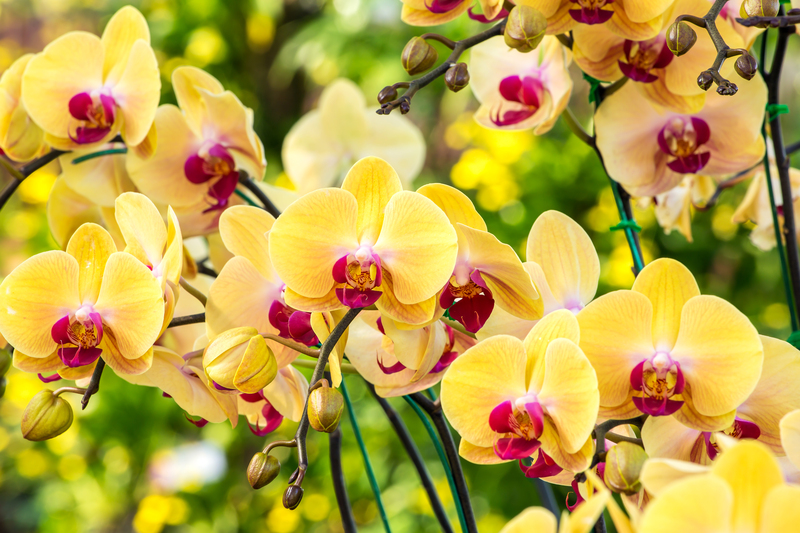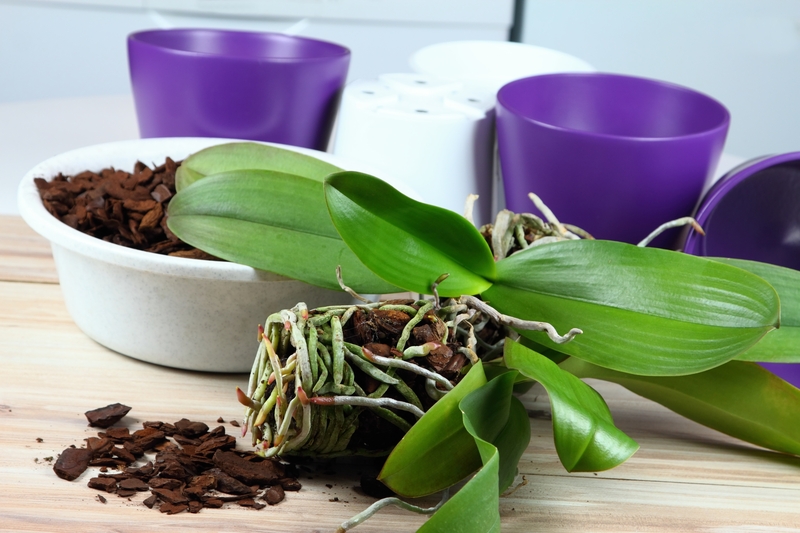Create texture in your UK garden with 9 diverse ground covers
Posted on 15/05/2025

Create Texture in Your UK Garden with 9 Diverse Ground Covers
Creating a garden in the UK can be a truly rewarding experience. Whether you have a lush, expansive yard or a quaint courtyard space, incorporating ground covers can significantly enhance the texture and visual appeal of your garden. Ground covers provide a tapestry of colors, forms, and textures that can transform and enrich any garden setting. This article explores nine diverse ground covers that are perfect for creating texture in your UK garden.
1. Creeping Thyme (Thymus serpyllum)
Creeping thyme is a low-growing, fragrant ground cover that is perfect for sunny spaces. With its small, soft leaves and tiny lilac-pink blooms, it creates a carpet-like lush texture underfoot. This ground cover is not only drought-tolerant but also attracts pollinators such as bees, adding life and movement to your garden. Plant it in areas with full sun and well-drained soil for the best results.
2. Ajuga (Ajuga reptans)
Popularly known as bugleweed, Ajuga offers a bold contrast with its deep burgundy and bronze shades. Its foliage creates a dramatic ground cover, complemented by spikes of blue flowers in late spring. Ajuga reptans flourishes in both sun and partial shade, making it versatile for various garden conditions. Its fast growth rate ensures quick coverage, helping suppress weeds and stabilizing the soil.
3. Sedum (Sedum spp.)
Sedum, or stonecrop, is an ideal choice for gardeners looking to add a variety of textures. With its fleshy, succulent leaves, Sedum is available in a myriad of colors ranging from green to vibrant red. These ground covers are low maintenance and thrive in poor soil conditions. Their ability to retain water makes them perfect for dry, sunny areas. Consider varieties like Sedum spurium or Sedum reflexum for extended coverage.
4. Lamb's Ear (Stachys byzantina)
For a soft-textured look, the fuzzy, silvery leaves of Lamb's Ear are an excellent choice. They reflect light, adding a serene, shimmering effect to the garden. Perfect for borders and edges, this ground cover requires full sun and well-drained soil. While it blooms with tall spikes of pink-purple flowers, its foliage is the primary attraction.
5. Periwinkle (Vinca minor)
Also known as creeping myrtle, Periwinkle is renowned for its glossy green leaves and bright periwinkle-blue flowers. This hardy ground cover thrives in shaded areas, making it ideal for underplanting beneath trees or in garden areas with limited sunlight. It's effective in erosion control and forms a dense mat that prevents weed growth.
6. Sweet Woodruff (Galium odoratum)
Sweet Woodruff is a lovely ground cover, especially fitting for shady gardens. Its whorls of emerald green leaves and star-shaped white flowers create a soft carpet-like appearance. Flourishing in damp conditions, Sweet Woodruff emits a sweet scent, particularly when dried, adding a fragrant dimension to your garden.
7. Barrenwort (Epimedium spp.)
For a delicate, fairy-tale charm, Barrenwort is a superb ground cover. With heart-shaped or arrowhead foliage and tiny flowers, it's perfect for adding sophisticated texture. This perennial thrives in partial to full shade and tolerates dry conditions once established. Its foliage often turns a beautiful bronze in autumn, enhancing its year-round appeal.
8. Corsican Mint (Mentha requienii)
Corsican Mint is a compact ground cover that releases a delightful mint aroma when stepped on. Its small, rounded leaves form a dense mat that is soft to walk over. Although it prefers full sun, it can tolerate some shade. Ideal for planting between stepping stones or along paths, Corsican Mint creates a fresh and inviting fragrance in the garden.
9. Wild Ginger (Asarum europaeum)
Wild Ginger offers an elegant ground cover option with its glossy, evergreen leaves. This plant prefers shady, woodland conditions and moist, humus-rich soil. With its unique cup-shaped flowers hidden beneath the foliage, it adds intrigue to your garden landscape.

Benefits of Using Ground Covers
- Erosion Control: Ground covers stabilize soil and prevent erosion, particularly on slopes.
- Weed Suppression: Dense growth habit of ground covers inhibits weed establishment.
- Low Maintenance: Once established, many ground covers require minimal care.
- Habitat Creation: Provide food and shelter for various wildlife, including pollinators.
- Environmental Friendliness: Reduce the need for pesticides and fertilizers.
Conclusion
Incorporating ground covers into your UK garden can transform your landscape with their varied textures and colors, creating a tapestry that is both beautiful and beneficial. These diverse ground covers not only add aesthetic value but also contribute to a healthier, more sustainable garden environment. Consider integrating some of these remarkable plants into your garden for a flourishing, textured landscape that thrives through the seasons.

